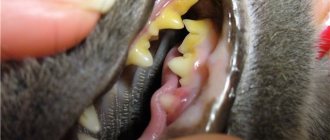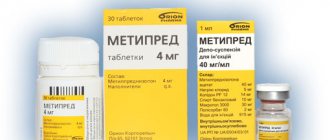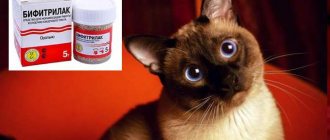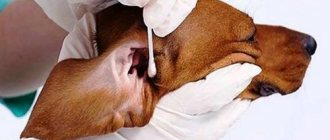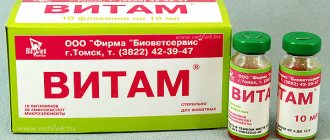Electronarcosis
They are carried out using generators of pulsed, sinusoidal and interference electric current. The main advantage of electroanesthesia occurs in patients with toxic and allergic reactions to drugs used for anesthesia and local anesthesia. More often, electronarcosis is used as a component of general combined anesthesia. Electronarcosis has three stages: 1 - superficial analgesia with partial muscle relaxation, decreased breathing, sedation (effective current of the highest value is 1-2 mA at a frequency of 100 Hz, pulse duration 0.5-1 ms); II manifests itself at a current strength of 3-5 mA, the pain threshold increases, symptoms of motor and autonomic excitation are pronounced, convulsions are possible; 111 - narcotic, detected with a current of 50-10 mA, characterized by pain areflexia. In dental practice, electrical anesthesia of hard dental tissues is used using devices INPPN-1, ELOZ-1, 2. The active electrode is attached to the tip of a drill or an excavator. The effect of analgesia when using only electroanesthesia is inconsistent. Electrical stimulation anesthesia refers to the technique of influencing peripheral nerves for the purpose of analgesia and hypoesthesia during surgery. It can be in the form of transcutaneous electrical neurostimulation (TENS), electroacupuncture reflex analgesia. To perform TENS, the electrodes of the device are placed in the surgical field perpendicular to the nerves, and the current generator is turned on until the effect of analgesia is achieved.
Overdose
According to many studies, the described pharmaceutical drug is the safest anesthetic for animals. In cats, blood pressure levels do not change, and awakening is observed quickly, regardless of the dosage of the administered medication. However, overdose still happens. It manifests itself in the form of inhibition of the function of the respiratory and cardiovascular systems. If this happens, artificial ventilation is prescribed. In addition, medications are used that increase blood pressure.
Audio anesthesia and hypnosis
Sound anesthesia is based on the creation of a focus of excitation in the area of the sound analyzer in the cerebral cortex, which causes diffuse inhibition in other parts of the brain. This is achieved by influencing the auditory analyzer with a sound signal of a certain frequency range. Hypnosis as a form of psychotherapeutic influence is used in the treatment of diseases accompanied by pain - various types of pain localized in the face and jaws (prosopalgia), as well as during tooth extraction. For hypnosuggestive therapy, the degree of susceptibility to hypnosis should be determined. Before the operation, the patient is taught that there will be no pain during the intervention and anesthesia is simulated. During the operation, tactile sensitivity and consciousness are preserved, but the patient should not feel pain. To enhance the effect of hypnosis, sleeping pills are administered, electrosleep, and small doses of narcotic substances are used. They resort to hypnosis during operations when anesthesia is contraindicated. Hypnosis can be successful in dental procedures in individuals with good hypnosis. In addition, it is indicated for pre-anesthesia or preoperative preparation, in the postoperative period.
Application procedure
Anestofol 5% is used for the euthanasia of dogs and cats whose physical suffering cannot be alleviated with medication.
For euthanasia, Anestofol 5% is administered intravenously to dogs and cats at a dose of 1 ml of the drug per 2.5-5 kg of animal weight, which corresponds to 10-20 mg of propofol per 1 kg of animal weight.
Violation of the dosage regimen of the drug should be avoided.
Anestofol 5% is compatible with muscle relaxants, inhalational and non-inhalational anesthetics, with drugs used for premedication, analgesics, but this may increase the inhibitory effect on respiration and lower blood pressure.
What are the uses of Propofol in veterinary medicine?
Propofol is used as a hypnotic substance.
What are the advantages of treating cats with Propofol:
- the anesthetic is administered only intravenously;
- administration of the drug quickly euthanizes the animal;
- does not affect the cardiovascular system;
- provides a quick recovery from anesthesia.
shutterstock
Giving Propofol to a cat as the only anesthetic is possible only for short-term interventions. For example, brushing an animal’s teeth, examining the oral cavity and removing foreign objects from the throat.
This drug is not soluble in water; it is a white oily emulsion.
The mechanism of action is not in pain relief during surgery, but in increasing the pain threshold. It does not accumulate in the body, combining in the blood with plasma proteins, breaking down into components in the liver cells and excreted through the kidneys. The animal quickly wakes up after using Propofol.
What are the features of prescribing Propofol for cats?
Unlike other animals, cats have a slower rate of metabolism, causing drugs to break down slowly and take longer to leave the cat's body.
Propofol is a phenolic compound. For their breakdown and excretion, glucuronides are needed, which the cat lacks. Therefore, the animal wakes up more slowly after administration of the drug.
shutterstock
The dosage of propofol for a cat should not exceed 6÷8 μ/kg when using one anesthetic component; if used together with analgesics - 4÷6 mc/kg.
Operations at the indicated dosage take place without respiratory distress in cats.
Medicines containing the active substance Propofol
Anestofol is a drug with the active substance Propofol. Due to the icecoin included in the composition, pain is minimized.
Propofol provides rapid anesthesia for the animal.
The dose of Propofol is prescribed to cats depending on the time required for the anesthesia procedure and the weight of the animal:
- if short-term intervention is required, the dose is 4 microns per 1 kilogram;
- for basic operations, the dose is up to 8 microns per 1 kg of weight.
For euthanasia and gentle euthanasia, the dosage of Propofol for a cat is from 10 mg to 20 mg per kg of animal weight.
It is not recommended to feed the animal for 24 hours before anesthesia. The drug tends to be excreted in milk; the babies are given to the mother no earlier than a few hours after anesthesia.
shutterstock
Side effects of the drug
Occasionally, a drop in pressure and apnea syndrome occur. Sometimes vomiting and nervous agitation are observed.
Veterinarians use Vetofol for short-term anesthesia for cats and dogs, when it is necessary to quickly remove the animal from a hypnotic state.
Doses of Vetofol for cats:
- without preliminary preparation for anesthesia - 8 mg per 1 kg of weight;
- with preliminary preparation (premedication) – 6 mg per 1 kg of weight.
Side effects of Vetofol
Vomiting, short-term shortness of breath, and bradycardia may occur.
In case of overdose, complications with the respiratory system may occur, which will require artificial ventilation.
Zoletil is a drug for non-inhalation anesthesia
A modern anesthetic that has replaced the drug Ketamine, which is banned in many clinics.
It contains two active substances. Each of them enhances the effect of the drug. Well tolerated when used in small animals. Does not affect the vascular and respiratory systems, which explains its use in most surgical interventions:
- performing a caesarean section;
- for superficial interventions – they impregnate the soft tissues of the animal;
- in the treatment of eyes and mouth;
The anesthetic effect occurs after 1÷7 minutes; deeper anesthesia after 20÷60 minutes. The effect of Zoletil ceases from 1 hour to 5.5 hours. In young and old animals, the period increases.
shutterstock
If a long-term anesthetic effect is not required, the dose is 10 microns/kg; with deeper anesthesia - 15 microns/kg.
Zoletil is contraindicated for the following diseases:
- hypertension;
- of cardio-vascular system;
- pancreas;
- problem with the respiratory system.
The placenta allows the drug to pass through, so fetal depression is possible
Use with caution in renal pathologies
Side effects of anestofol / Veterinary warnings
Anestofol should be administered slowly (25% of the calculated dose every 30 seconds until the desired effect is achieved), since there is a high probability of respiratory arrest with cyanosis. In humane medicine, there is evidence that in some patients anestofol causes the release of histamine and anaphylactic reactions (rarely). It is also known that the drug has a direct inhibitory effect on the myocardium with arterial hypotension.
Sometimes, during induction of anesthesia, dogs may experience convulsive symptoms (opisthotonus, myoclonic twitching), which (if they do not disappear spontaneously) should be eliminated by intravenous administration of diazepam (Sibazone). Anestofol can have both anticonvulsant and seizure-stimulating effects. Therefore, the drug should be administered with extreme caution to animals with a history of seizure disorders or the presence of active seizures. However, some veterinarians believe that anestofol is better suited than thiopental in animals with seizure reactions or when performing procedures associated with a high risk of seizures (for example, during myelography). Anestofol is a fairly inexpensive drug.
It is known that with repeated injections of anestofol (once a day) in cats there is an increase in the formation of Heinz bodies
(Heinz), prolongation of recovery period, anorexia, lethargy, malaise and diarrhea. The formation of Heinz bodies occurs due to oxidative damage to red blood cells, which has also been described in cats and with the use of other phenolic compounds. Use of the drug in dogs for several days in a row is considered safe. In humane medicine, cases of pain reactions in the area of injection of anestofol have been described, although in dogs and cats this effect is of little clinical significance. Extravascular delivery of the drug does not cause either irritation or detachment of surrounding tissues.
Chemical properties
2,6-Diisopropylphenol is a chemically inert derivative, consisting of a phenolic ring to which two isopropyl groups are attached:83. Propofol is practically insoluble in water, but is highly soluble in fats, which explains the modern composition of the drug solvent: 10%, 1.2% purified egg phospholipids (emulsifier), 2.25% and for regulation. Propofol emulsion is an opaque, slightly viscous, milky-white liquid. This color is due to the scattering of light by small (approximately 150 nm) droplets of the oil it contains. There are forms of propofol that contain or as an antimicrobial agent to prevent the growth of bacteria in the preparation. The drug ampoule contains 20 ml of 1% propofol solution (10 mg/ml); Bottles of 50 and 100 ml of 1% and 2% solution for infusion are also available.
A water-soluble prodrug, fospropofol, was developed and approved in 2008. Trade name: Lusedra
. Fospropofol acts quickly before propofol.
Pharmacology and mechanism of action
Hypnotic. The mechanism of action is not well defined, but it is likely that it produces effects through a mechanism similar to barbiturates. Consequently, it causes central nervous system (CNS) depression through its effects on GABA receptors. Propofol reduces the effects of GABA from dissociation to binding of its receptors
, thereby increasing chloride channel conduction, hyperpolarization of postsynaptic cell membranes, and inhibition of postsynaptic neurons. This produces the narcotic and hypnotic effect observed in animals. Propofol induces short-term anesthesia (10 minutes) followed by a rapid and smooth recovery. The original formulation contains propofol in castor oil. There are other formulations containing soybean oil, glycerin and purified egg phospholipids. The newest formulation contains 1% propofol in an emulsion mixture of medium and long chain triglycerides, which provides good encapsulation and a lower concentration of free propofol.
Pharmacokinetics
Due to its high solubility in fats, propofol quickly penetrates the brain, which causes an almost instantaneous onset of action (loss of consciousness occurs after the interval necessary for the drug to be delivered by blood from the forearm to the brain). The peak effect time is approximately 90 seconds. Propofol is highly (97-98%) bound to plasma proteins (mainly α1- and to a lesser extent plasma):104. Rapidly metabolized in the liver by conjugation to form water-soluble inactive metabolites (glucuronides and sulfates), which are excreted by the kidneys. In unchanged form, less than 1% of propofol is excreted in the urine and up to 2% in the feces. Its clearance rate (1.5-2.2 l/min) exceeds the hepatic blood flow, which indicates the possibility of extrahepatic metabolism of the drug. This assumption was confirmed when large amounts of the glucuronide metabolite were detected in the urine of a patient during the non-liver phase of liver transplantation. It is believed that the lungs play an important role in the extrahepatic metabolism of the drug. Two recent studies have identified a role for the kidney in the metabolism of propofol, accounting for 30% of total clearance. In in vitro
Studies of the human kidney and microsomes of these tissues have shown the ability to form propofol glucuronide. Propofol produces concentration-dependent inhibition and may alter the metabolism of drugs dependent on this enzyme system (eg).
The pharmacokinetics of propofol is described by a two- and three-sector (chamber) model. When using a two-sector model, the initial distribution phase of propofol is 2-8 minutes, and the elimination phase is 1-3 hours. Studies using a three-sector model have shown that the elimination half-life of propofol in the initial fast distribution phase is 1-8 minutes, in the slow distribution phase it is 30-70 minutes, and in the elimination phase it is 4-23.5 hours. This longer half-life in the elimination phase more accurately reflects the slow return of propofol from poorly perfused tissues to the central sector. The time to halve the concentration of propofol is less than 40 minutes when infused over 8 hours. However, the duration of its hypnotic effect is much shorter, due to its rapid distribution into pharmacologically inactive peripheral tissues (eg, fat) and extensive metabolism outpacing its slow return to the central sector:107.
The pharmacokinetics of propofol is influenced by various factors (for example, gender, age, body weight, concomitant diseases, combination with other drugs). Propofol may slow its own clearance by reducing hepatic blood flow.
General information
Anestofol 5% contains in 1 ml as active ingredients propofol - 50 mg and lidocaine hydrochloride - 50 mg, and as excipients: tocopherol acetate - 7 mg, L-arginine - 1 mg, sodium metabisulfite - 1 mg, macrogol 15 hydrocystearate – 270 mg, Trilon B – 0.1 mg, dimethylacetamide – 150 mg, benzyl alcohol – 0.01 ml and water for injection – up to 1 ml.
Anestofol 5% in appearance is a transparent, colorless to light yellow liquid that is opalescent in transmitted light.
Anestofol 5% is stored in the manufacturer's sealed packaging, in a dry place, protected from light, separately from food and feed, at a temperature of 10 ° C to 25 ° C.
When storing Anestofol 5% at a temperature of about 10 ° C, a sediment may form, which dissolves at a temperature of 20-25 ° C for 3-4 hours or at a temperature of 38-40 ° C for 30-40 minutes and does not affect the quality of the drug .
After the first opening of the bottle, the drug can be used for no more than 18 days, subject to aseptic rules and storage at a temperature of 10-20 ° C.
The shelf life of the medicinal product, subject to storage conditions, is 2 years from the date of production.
Anestofol 5% must not be used after the expiration date.
Anestofol 5% is stored in places inaccessible to children.
Unused medicinal product is disposed of in accordance with the requirements of current legislation.
Cautions
Despite the obvious individual advantages and relative safety of non-barbituric sedative-hypnotic drugs, the following factors must be taken into account:
age. To ensure adequate anesthesia in elderly patients, a lower concentration of propofol in the blood is required (25-50%). In children, induction and maintenance dosages of propofol based on body weight should be higher than in adults; duration of intervention. The unique pharmacokinetic characteristics of propofol allow it to be used as a hypnotic component to maintain long-term anesthesia with little risk of prolonged depression of consciousness. But to a certain extent, drug accumulation still occurs. This explains the need to reduce the infusion rate as the intervention time lengthens. The use of propofol for long-term sedation in ICU patients requires periodic monitoring of blood lipid levels; concomitant cardiovascular diseases
The use of propofol in patients with cardiovascular and debilitating diseases requires caution due to its depressant effect on hemodynamics. There may not be a compensatory increase in heart rate due to some vagotonic activity of propofol
The degree of hemodynamic depression during the administration of propofol can be reduced by pre-hydration and slow administration by titration. Propofol should not be used in patients in shock or with suspected massive blood loss. Propofol should be used with caution in children during surgery to correct strabismus due to the possibility of increased oculocardial reflex; concomitant respiratory diseases do not have a significant effect on the propofol dosage regimen. Bronchial asthma is not a contraindication to the use of propofol, but is an indication for the use of ketamine; concomitant liver diseases. Despite the fact that no changes in the pharmacokinetics of propofol are observed in patients with liver cirrhosis, recovery after its use in such patients occurs more slowly. In case of chronic alcohol dependence, increased dosages of propofol are not always required. Chronic alcoholism causes only minor changes in the pharmacokinetics of propofol, but recovery may also be somewhat delayed; concomitant kidney diseases do not significantly change the pharmacokinetics and dosage regimen of propofol; pain relief during childbirth, effect on the fetus, GHB is harmless to the fetus, does not inhibit the contractility of the uterus, facilitates the dilatation of its cervix, therefore it can be used for pain relief in childbirth. Propofol reduces the basal tone of the uterus and its contractility, penetrates the placental barrier and can cause fetal depression. Therefore, it should not be used during pregnancy and under anesthesia during childbirth. It can be used to terminate pregnancy in the first trimester. The safety of drugs for newborns during breastfeeding is unknown; intracranial pathology. In general, propofol has won the sympathy of neuroanesthesiologists due to its controllability, cerebroprotective properties, and the possibility of neurophysiological monitoring during operations. Its use in the treatment of parkinsonism is not recommended, because it may bias the effectiveness of stereotactic surgery; danger of contamination. The use of propofol, especially during long-term operations or for the purpose of sedation (over 8-12 hours), is associated with a risk of infection, since intralipid (the fatty solvent of propofol) is a favorable environment for the growth of microorganism cultures. The most common pathogens are epidermal and Staphylococcus aureus, Candida albicans fungi, less often the growth of Pseudomonas aeruginosa, Klebsiella and mixed flora is detected. Therefore, strict adherence to asepsis rules is necessary. It is unacceptable to store drugs in open ampoules or syringes, as well as to reuse syringes. Every 12 hours it is necessary to change infusion systems and three-way taps. If these requirements are strictly followed, the incidence of contamination from the use of propofol is low.
Learn about essential drugs in animals
- Meditin 1 and Meditin 0.1 - instructions for veterinary use for dogs, cats and horses. Pharmacology, doses, indications and contraindications for the use of Meditin
- Rometar for Animals (instructions for use for horses, cattle, dogs, cats, deer and other animals). Doses, pharmacological features, contraindications are indicated
- Medetomidine for animals (instructions for use in veterinary medicine, doses, indications and contraindications)
- Zooxylasine. Instructions for the use of zooxylazine in animals. Veterinary drug affecting the central nervous system
- Telazol 100: Instructions for use in veterinary medicine. Telazol is a drug for anesthesia for dogs, cats and other types of animals. Doses given
- Rompun for veterinary medicine. Instructions for using rompun for animals
- Zoletil 100 for dogs and cats: Instructions for use in veterinary medicine. Doses of zoletil for different types of animals. Zoletil is an anesthetic!
- Xylazine: application in veterinary medicine and medicine. Instructions for the use of xylazine in animals are considered. History of the discovery and study of the drug
- Dexdomitor: Instructions for veterinary medicine. Dexdomitor doses for dogs, cats and other animals. Pharmacology, indications and contraindications
- Instructions for use of Domitor for veterinary medicine. Pharmacology of Domitor, its indications and contraindications
- Xylavet (instructions for use for animals). Xylavet is a veterinary drug for sedation of dogs, cats and other species of animals.
- Xyla for veterinary medicine: Instructions for use. Dosing of Xyla for dogs, cats and other types of animals. Pharmacology, indications and contraindications for the use of the drug Xyla
- Ketamine. Instructions for the use of ketamine in cats, dogs and other animals. Veterinary drug affecting the central nervous system
^Top
Pain relief with acupuncture
Pain relief with acupuncture (acupuncture analgesia, acupuncture analgesia, electroacupuncture analgesia, electropuncture) allows you to achieve analgesia by applying mechanical stimulation or electric current to certain points. This method of anesthesia is used to relieve pain in the postoperative period and as an analgesic component of combined anesthesia. It is known that 116 points out of 693 are used to treat dental diseases, most of them to relieve toothache.
Electroacupuncture analgesia (EAA) is rarely used independently, more often as a component of general combined anesthesia. After premedication, acupuncture needles are inserted into the patient into acupuncture points near the operation area, into the auricle, and also using landmarks of the innervation zones of the branches of the trigeminal nerve. The electrodes of the EAP apparatus are connected to the needles and stimulation is started with a frequency of 1-4 Hz, increasing the current intensity to the pain threshold. The duration of stimulation at a frequency of 1-4 Hz should be 20-50 minutes. Introductory anesthesia is started, and in the surgical stage the current is increased by 2-3 times and the frequency is increased to 10-15 Hz. At the end of the surgical intervention, the current frequency is reduced to the initial one. If anesthesia during the intervention is insufficient, seduxen and small doses of fentanyl are additionally administered. EAP should be performed by an anesthesiologist trained in acupuncture.
Precautions when using propofol-based drugs
Before anesthesia in a patient with epilepsy, you need to make sure that he is receiving antiepileptic therapy
Several studies have shown the effectiveness of propofol in the treatment of status epilepticus, but nevertheless, it can increase the risk of seizures; In patients with severe heart failure and other serious heart diseases, propofol should only be used with extreme caution and under the constant supervision of physicians;
Patients with high intracranial pressure and low mean arterial pressure require special attention. It is important to remember the significant risk of a drop in intracranial perfusion pressure in such patients; With high intracranial pressure, adequate therapy is required to stabilize cerebral perfusion pressure; When using propofol for anesthesia in newborns and children under 3 years of age, there were no differences in pharmacokinetics and effects from the use of the drug in older patients; In cases where there is clearly a likelihood of side effects associated with activation of the vagus nerve, the intravenous administration of an anticholinergic drug is targeted before induction of anesthesia; It is undesirable to use drugs based on this substance in obstetric practice, since propofol leaks into the placenta and can cause neonatal depression (may be used in the first trimester during abortion operations); The risk of pain along the vein can be reduced when infusions are administered through large-diameter veins or when administered in parallel with a lidocaine solution; Injection of the drug can only be carried out by trained personnel if emergency use of mechanical ventilation, oxygen therapy, and full resuscitation measures is possible.
Anestofol storage / Stability / Compatibility
Anestofol injection form
should be stored in a place protected from light at a temperature no higher than 22 ° C, but not lower than 4 ° C; it is forbidden! place in the refrigerator and allow to freeze. Shake well before use. The solution cannot be used if a precipitate has formed. The manufacturer recommends discarding the unused portion of the drug at the end of anesthesia or after 6 hours.
Compatibility with other drugs has not been well studied. Anestofol is compatible with the most commonly used IV solutions (eg lactated solution, Ringer's or glucose) when added to the IV line.
Propofol place in therapy
The search for the ideal anesthetic led to the creation of propofol. It is distinguished by the rapid and smooth onset of the hypnotic effect, the creation of optimal conditions for mask ventilation, laryngoscopy, and installation of a laryngeal airway. Propofol, unlike barbiturates, BD, ketamine, sodium oxybate, is administered only intravenously as a bolus (preferably by titration) or infusion (drip or infusion using a pump). As with other anesthetics, the choice of dose and the rate of sleep onset after propofol administration are influenced by factors such as the presence of premedication, rate of administration, elderly and senile age, severity of the patient’s condition, and combination with other drugs. In children, the induction dose of propofol is higher than in adults due to pharmacokinetic differences.
To maintain anesthesia, propofol is used as a base hypnotic in combination with an inhalational or other intravenous anesthetic (TIVA). It is administered either as a bolus in small portions of 10-40 mg every few minutes, depending on clinical needs, or by infusion, which is certainly preferable due to the creation of a stable drug concentration in the blood and greater convenience. The classic administration regimen of the 1980s is 10-8 mg/kg/h (after a bolus of 1 mg/kg, infusion over 10 minutes at a rate of 10 mg/kg/h, the next 10 minutes - 8 mg/kg/h, c further - b mg/kg/h) is currently used less frequently, since it does not allow a rapid increase in the concentration of propofol in the blood, the bolus size is not always easy to determine, and if necessary, reduce the depth of anesthesia by stopping the infusion; it is difficult to determine the appropriate time for its resumption.
Compared to other anesthetic drugs, the pharmacokinetics of propofol are well modeled. This was a prerequisite for the practical implementation of the propofol infusion method according to the target blood concentration (TBC) by creating syringe perfusers with built-in microprocessors. Such a system relieves the anesthesiologist from complex arithmetic calculations to create the desired concentration of drugs in the blood (i.e., selecting infusion rates), allows a wide range of administration rates, clearly demonstrates the titration effect and guides the timing of awakening when stopping the infusion, combines ease of use and depth control anesthesia.
Propofol has proven itself well in cardiac anesthesiology due to intra- and postoperative hemodynamic stability and a reduction in the frequency of ischemic episodes. For brain, spine and spinal cord surgery, the use of propofol allows a wake-up test to be performed if necessary, making it an alternative to inhalational anesthesia.
Propofol is the drug of first choice for providing anesthesia in an outpatient setting due to the speed of awakening, restoration of orientation and activation, characteristics comparable to those of the best representatives of inhalational anesthetics, as well as a low probability of PONV. Rapid restoration of the swallowing reflex promotes earlier safe food intake.
Another area of application of intravenous non-barbiturate hypnotics is sedation during operations under regional anesthesia, during short-term therapeutic and diagnostic procedures, as well as in the ICU.
Propofol is considered one of the best drugs for sedation purposes. Characteristic is the rapid achievement of the desired level of sedation by titration and rapid restoration of consciousness even with long infusion periods. It is also used for patient-controlled sedation, with advantages over midazolam.
Propofol has good qualities as an induction agent, a controlled hypnotic during the maintenance phase and the best characteristics of recovery from anesthesia. However, its use in patients with BCC deficiency and circulatory depression is dangerous.
Recreational use
The drug is known to be used recreationally (including by medical professionals), however such use is relatively rare due to the potency of the drug and the fact that it requires medical supervision for its safe use
It is important to note that the steep dose-response curve of the drug makes the potential for abuse very dangerous without proper supervision. Deaths have been reported as a result of self-administration of the drug
Short-term effects of the drug, for which it is used recreationally, include mild euphoria, hallucinations and disinhibition. The euphoria caused by propofol differs from the euphoria caused by other sedatives. One anesthesiologist said: “I... remember my first experience using propofol on a patient: a young woman... woke up from anesthesia, looked at me as if I were Brad Pitt and told me that she felt just great.” Recreational use of the drug is common among medical personnel (anesthesiologists) who have access to the drug and is reported to be more common among anesthesiologists working shifts with short rest periods
Long-term use has been reported to lead to dependence. Public attention to the risks associated with off-label use of propofol increased in August 2009, when a Los Angeles coroner concluded that Michael Jackson died as a result of taking a mixture of propofol and the benzodiazepines lorazepam and diazepam. Jackson's personal physician, Conrad Murray, administered 25 mg of propofol diluted with lidocaine shortly before Jackson's death.
Despite this, as of 2009, propofol is not a drug on the Drug Enforcement Administration's schedule.
Neuroleptanalgesia HLA
With this method, adequate protection from painful injury is provided without the use of a narcotic substance for anesthesia. “Switching off” pain sensitivity is achieved by a rational combination of deep analgesia and neurolepsy without turning off consciousness, intravenous administration of a strong analgesic fentanyl and the neuroleptic dehydrobenzperidol (dro-peridol). Its characteristic signs are mental indifference, motor rest and neurovegetative inhibition. Various techniques of neuroleptanalgesia, including in combination with anesthesia or local anesthesia, are widely used for various surgical interventions in dental patients in a hospital.
Dehydrobenzperidol (droperidol) is an antipsychotic, 1 ml contains 2.5 mg of the drug. Can be administered intravenously, intramuscularly. It has a pronounced sedative effect, does not cause analgesia, but potentiates the analgesic effect. Suppresses vasomotor reflexes, somewhat depresses breathing, lowers blood pressure and increases heart rate, weakens the contractility of the heart. Dehydrobenzperidol has an antiemetic effect and blocks the sympathetic-adrenal system. About 10% of the drug is excreted unchanged in the urine, the rest is hydrolyzed in the liver. It has a hypotensive effect, causes bradycardia, has an antishock effect, and does not cause bronchospasm.
Fentanyl is a morphine-like analgesic with 100 times the analgesic effect of morphine. Fentanyl causes a degree of analgesia that allows surgical intervention. In full dose, fentanyl depresses breathing, suppresses the cough reflex, causes ataxia, bradycardia, and bronchospasm. Available in the form of a colorless liquid, 1 ml of which contains 0.5 mg of the drug. All side effects of fentanyl can be relieved with nalorphine. It is destroyed in the liver and excreted in the urine. The drug is widely used in surgical interventions, including in dental patients.
Contraindications and precautions
Propofol may cause apnea, hypoxia and cyanosis upon induction.
Supplemental oxygen should be available to prevent side effects. Do not use in animals with hypotension. When propofol is used to sedate animals during intradermal skin testing, it may cause a higher number of false-positive reactions. Propofol should not be used alone for pain relief in horses or in combination with other sedatives or premedications.
Interactions of propofol with other drugs. Propofol can be used safely with several other anesthetics. It was combined with sodium thiopental (2.5%) in a 1:1 mixture without loss of effectiveness. Propofol has been used with atropine, glycopyrrolate, acepromazine, xylazine, oxymorphone, halothane and isoflurane, without any interactions.


